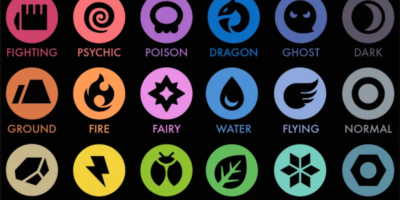*** The Tin Soldier is intended to be a humorous and entertaining look at issues and events at the University of Waterloo. As such articles should not be taken to represent real events or opinions, and they should not be associated with the University of Waterloo staff or administration in any way. Any similarities to real world events, people or corporations is purely coincidental – or non-coincidental but meant in an entirely joking manner.***
Children are pure of heart, like the gold bars they keep chained up in the Royal Mint in Ottawa. But like gold, which can be easily stretched into razor-edged garrotting wire, children are also malleable of mind and easily corrupted into violent, lazy sociopaths. I guarantee you that almost every man, woman, and child in our penitentiary system today has watched at least once Disney feature-length film before embarking on a life of crime.
It seems innocent at first, doesn’t it? Just a little Disney to pass the time in second grade homeroom when the teacher’s misplaced his black line masters, and you’re excited to be all rebellious because you’re not doing math anymore, you’re watching Disney. A little Disney in the dentist’s waiting room, and it calms you down better than a tank of koi ever could. And your parents might put on a Disney movie in the basement and leave you and your friends limply sprawled across the floor like invalids in an opium den. They start you on Disney when you’re too young to say no and ask for a different movie. And you trust them, don’t you?
Even now, I know you doubt my words. There’s no harm in Disney, you think. It’s all happy colourful animals and heartwarming Aesops. I watched Disney all the time as a kid and I turned out okay. What you believe is a lie.
The “magic” and “love” you think you feel when you watch Disney is nothing but a smokescreen for the darkness beneath. Cloaked underneath the incessantly saccharine singing and the dancing are subliminal undertones of utmost evil. For example, Disney films are rife with references to violence against women. In The Hunchback of Notre Dame, Frollo sings a whole song about how he wants to rape Esmeralda before deciding to just kill her with fire. In a similar vein, Gaston of Beauty and the Beast insists he will have “six or seven children… all boys” with Belle, prompting one to wonder what would happen if Belle decided to stop at two or three kids, or if the children were female. And then in Snow White when Prince Charming kisses the protagonist lying in a coffin – he doesn’t necessarily know that she’s not dead, and also supports the idea that taking advantage of a sleeping woman under the influence of magic apples is totally acceptable. Kids will pick up these ideas subliminally, like sentient psychic sponges, not to realize what they’ve seen until years later when the damage is already done.
Secondly, Disney films perpetuate T.H. White’s notion that “Magic is might”. Those with magical power perpetually oppress the mundane. For example, in Peter Pan, Tinkerbell, a powerful fairy, spends the entire movie trying to kill Wendy because she’s jealous and clingy, and of course she’s forgiven and made a Disney mascot, glorifying her obsessive psychopathic tendencies. In Beauty and the Beast, a fairy throws a peaceable kingdom into anarchy for the rudeness of a Prince who probably had to deal with tax law and inter-kingdom diplomacy before he was interrupted and held personally responsible for the social welfare of a single fairy expat wearing what looked like a Guy Fawkes mask. In the vein of political disruption, the Genie in Aladdin is cavalier in utilizing his forcing his candidate of his choice into a monarchy’s line of succession via fraud and income tax evasion. Disney films assert that it is commonplace for those with power, or “magic”, to manipulate those who do not have comparable means, referred to in modern vernacular as “muggles”.
Disney films themselves also reflect a certain unreality in their visual style and approach, reminiscent of complete and utter schizophrenic insanity. This is known in certain circles as an “Disney Acid Sequence”. Such acid sequences are remarkably common. In Dumbo, a bunch of pink elephants parade around the title character while he is in the throes of Oedipal grief and homesickness. In Pocahontas, the protagonist and her love interest run through the woods like a pair of hippies and reinforce a conservative approach to environmental preservation, and optimistic bobcat anthromorphism, except that the colours of what is described as “nature” bears no resemblance to real-life wilderness. Even The Aristocats has a rave sequence in which the titular characters are scantily dressed in fur and writhe rhythmically to funky music. Disney acid sequences are often accompanied by musical numbers, the combined effect if which are likely to cause viewer heads to bob uncontrollably to an invisible beat while seeing psychedelic swirls of light and colour.
Disney films continue to be a menace in modern society, as the production and distribution of Disney films has grown in recent years. An even more addictive variety of Disney films, known as Pixar productions, have also entered the market. The proliferation of both substances remains unabated; in fact, addiction is more widespread than ever before, to the point of becoming socially acceptable. Viewers of Disney films often find themselves purchasing tens of dollars of movie tickets and DVD packages every year to fuel their cravings.
It should be abundantly clear to all that Disney films pose a danger to viewers. Even the initial exposure to Disney film will often create a lifelong dependence on “warm and fuzzy feelings” (WAFF) that are induced. In fact, one’s brain will quickly become hardwired to associate Disney with the pleasurable effect of WAFF, and to subconsciously believe that nothing could feel quite the same as Disney when it comes to WAFF. Consequently, addiction to Disney is presently incurable, as non-Disney WAFF substitutes (such as Dreamworks features and asinine romantic comedies) are often rejected by the brain as ineffective and a low-quality source of WAFF, though substances of drastically different chemical structures, such as kittens and puppies, have been found to stimulate independent WAFF production. Unfortunately such treatment is extremely expensive and not currently funded because the Ontario Premier has been rumoured to have a pointy head and eat kittens for breakfast.
No, the best treatment for Disney film addiction is prevention. Talk to your children about the dangers of Disney at about the same time you tell them not to run on the playground and to “Just Say No” to throwing Nerf balls during recess. Remember, don’t watch Disney – not even once.




Leave a Reply